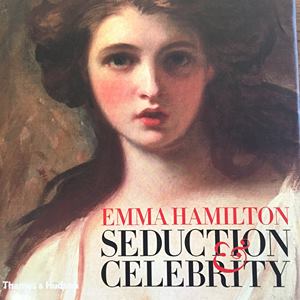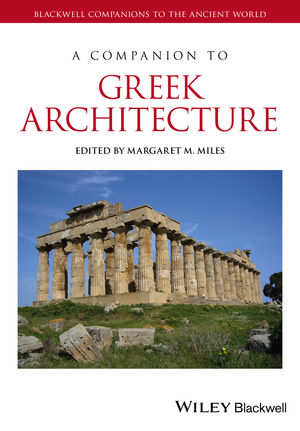New Publications on the Eighteenth Century
 For those of you who are interested in eighteenth-century history, art, architecture, and society, I have two new publications in books that have been published this fall. The first is in the catalogue for the exhibition Emma Hamilton: Seduction and Celebrity, which is now on view at the National Maritime Museum in London. Jonathan Jones of the Guardian has given the exhibition 5 stars, stating that
For those of you who are interested in eighteenth-century history, art, architecture, and society, I have two new publications in books that have been published this fall. The first is in the catalogue for the exhibition Emma Hamilton: Seduction and Celebrity, which is now on view at the National Maritime Museum in London. Jonathan Jones of the Guardian has given the exhibition 5 stars, stating that
Britain’s betrayal of Hamilton was nothing short of a national disgrace. The National Maritime Museum at last makes amends with an exhibition that is a case study in bringing history to life and restoring women to centre stage. No one in her time could resist Emma Hamilton, and nor will you.
My chapter, "A Classical Education: Naples and the Heart of European Culture," discusses Emma Hamilton's life in Naples, placing her in the intellectual and cultural context of the Enlightenment world of letters. Here is a short excerpt from the beginning of the essay:
Emma, as she had done so many times in the past, quickly adapted to life in Naples. With some 400,000 residents, Naples was the third largest city in Europe, after London and Paris. It was a land of extremes, of poverty and wealth cheek-by-jowl, of entwined ancient and modern landscapes. Walking on the beach, one might discover a starfish and sea urchins – or fragments of crumbling ancient buildings coughed up by the sea. The eighteenth-century German poet Goethe described the romance of the place. It was "the most astonishing landscape in the world; treacherous ground under a pure sky; ruins of unimaginable luxury, abominable and sad; seething waters; caves exhaling sulpher fumes; slag hills forbidding all living growth; barren and repulsive areas; but then, luxuriant vegetation, taking root wherever it can, soars up out of the dead matter, encircles lakes and brooks, and extends its conquest even to the walls of an old crater by establishing there a forest of noble oaks."
. . .
From her quarters, she had one of the grandest views in Naples. To the south, the Gulf of Naples defined the city as a maritime town. Along the coast, merchant ships were filled with olive oil and grain that had been delivered from the hinterlands. The
quayside was lined with hawkers and quacks. Prostitutes and musicians vied with mountebanks, dancers, and puppet shows for attention and money. Friars even preached from pulpits as the smell from food vendors, fish markets, and excrement wafted through the air. By using carriages, some elites tried to protect themselves from the mud and the pickpockets. However, others – in particular tourists – sought out street life. Their travel guides encouraged them to take ethnographic notes on the poorest Neapolitans, who supposedly ate macaroni with their hands and might erupt into dance at any moment. The impoverished lazzarone were of particularly interest. Rag-clad and unemployed, they numbered in the tens of thousands. Many travellers imagined that the climate made them languorous. Avoiding work, sleeping in the streets, these were people in a “state of nature” – with their own strict moral codes and honor systems. These tourists commissioned artists to paint street scenes featuring the lazzarone, imagining the Neapolitan urban landscape as a parallel to the rustic picturesque.
The catalogue, Seduction and Celebrity: The Spectacular Life of Emma Hamilton, is edited by Quintin Colville and Kate Williams and available from Thames and Hudson.
 For those of you more interested in architecture, you may be interested in my chapter, "The Reception of Greek Architecture in Eighteenth-Century Britain," in A Companion to Greek Architecture, edited by Margaret Miles. Here is a short excerpt that discusses the context of classical antiquarianism at mid century.
For those of you more interested in architecture, you may be interested in my chapter, "The Reception of Greek Architecture in Eighteenth-Century Britain," in A Companion to Greek Architecture, edited by Margaret Miles. Here is a short excerpt that discusses the context of classical antiquarianism at mid century.
While these ancient architectural remains were symbols of various Italian identities during the Greek-Roman quarrel of the 1740s and 1750s, they were also semiotic sites of struggle between the rival states of Britain and France. The period beginning with the War of Austrian Succession (1740-48) and ending with the Seven Years' War (1756-63) saw battlefields drawn beyond the front lines. These were years of a struggle in which the cultural shadow of Louis Quatorze loomed over Britain. The isles were lands of lesser artists – a realm of negligible royal patronage and aristocrats enraptured with continental painting, sculpture, and decorative goods. The lack of a national academy allowed French critics to direct barbs at their rivals to the north. In 1745 for example, Jean-Bernard, abbé Le Blanc published a letter about the arts in England: "Painting, sculpture and the other arts that depend on drawing, are as yet either unknown here, or in their infancy at most." The British lacked taste, and this could be tied to their lack of a national art academy (Le Blanc 1747: 39, 156). Connoisseurs and artists alike recognized the validity of his statement, even if they were loath to admit it. For instance, a note in the Gentleman's Magazine of 1749 argued, "That the English excel in genius, and have a natural taste superior to that of foreigners, I think, is very evident, from the great improvements which they have made in the polite arts, unassisted by the important auxiliaries which are furnished abroad by public academies (Anonymous 1749: 319)." But, for all this puffing, there was little evidence to point to – except in the realm of architecture. And, even in architecture, the French were much more theoretically sophisticated than their northern rivals, likely due to the existence of the academy system.
My chapter should be read as a companion chapter to Drew Armstrong's wonderful piece in the same book, "French Architectural Thought and the Idea of Greece."
"A Classical Education: Naples and the Heart of European Culture." Seduction and Celebrity: The Spectacular Life of Emma Hamilton, ed. Quintin Colville and Kate Williams. London: National Maritime Museum and Thames and Hudson, 2016. 109-37.
"The Reception of Greek Architecture in the Anglophone Atlantic in the 18th and 19th Centuries." A Companion to Greek Architecture, ed. Margaret Miles. Oxford: Blackwell, 2016. 509-25.
